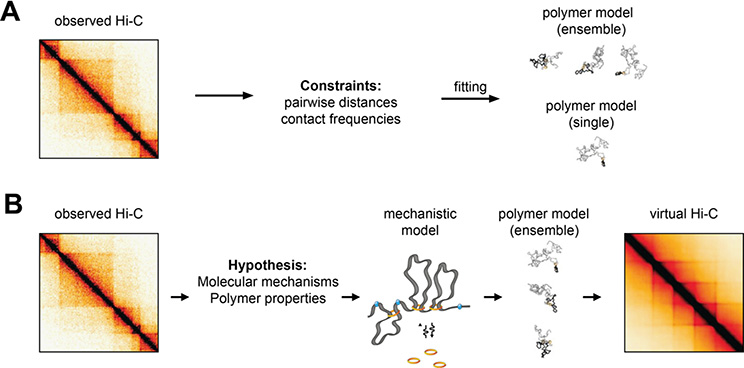Figure 5.
A. Data-driven polymer models use parameter fitting to determine consensus 3D structures that satisfy contact or distance constrains inferred from Hi-C maps. They can result in either single consensus structures, or more realistic structural ensembles reflecting to some extent the cell-to-cell variability observed experimentally. Adapted from (Fudenberg et al. 2017).
B. Mechanistic polymer models implement specific hypotheses concerning the mechanisms that drive 3D folding, and result in ensembles of structures that can be used to predict the outcome of virtual Hi-C experiments.

